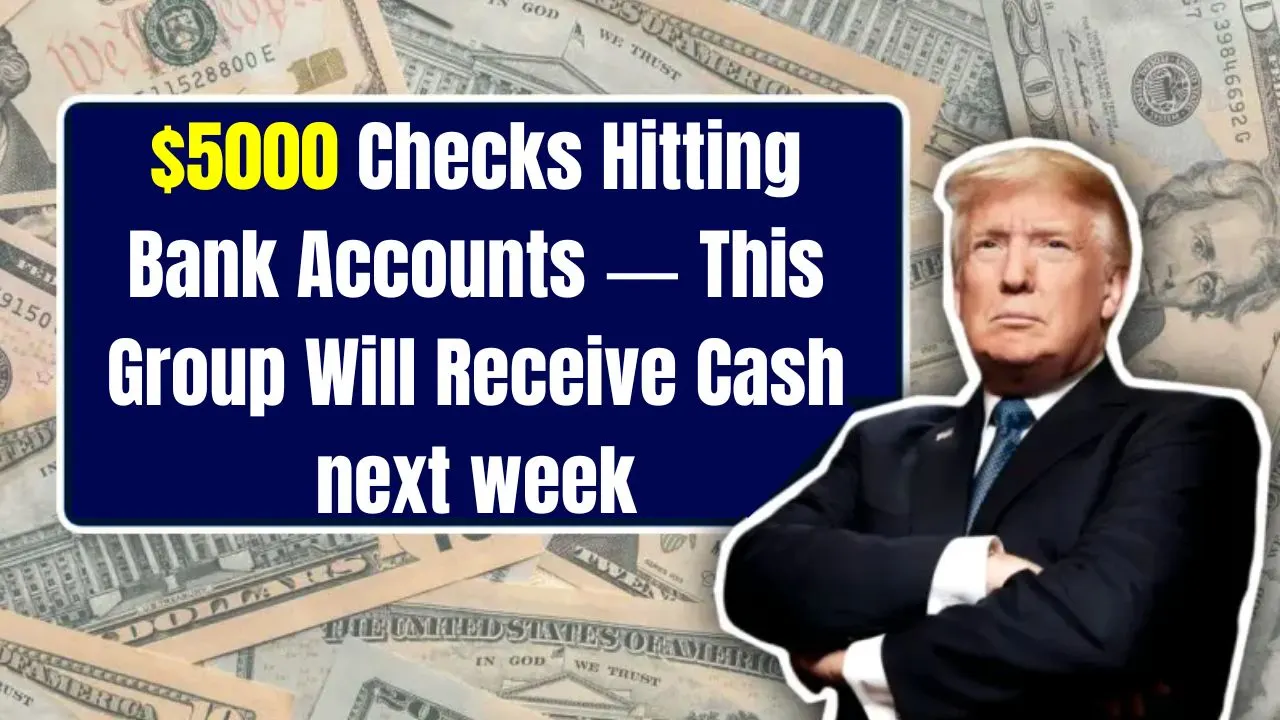Millions of Americans count on their monthly Social Security checks to cover everyday costs. This month though, there’s buzz about $5000 checks potentially landing in some bank accounts enough to get people checking their eligibility and payment calendars. If you’re wondering whether you might be one of the lucky few, you’re in the right place.
In this post I’ll walk you through how those $5000 checks come about, who qualifies, when the payments drop, and some smart moves you can use to boost your monthly benefit over time. I’ll keep things clear and practical so you’re not left guessing.
$5000 Checks: What Does That Really Mean
The phrase $5000 checks refers to the notion that certain Social Security beneficiaries might receive a payment close to the maximum possible monthly benefit, currently about $5,108 when they meet all the strict requirements. Not everyone is eligible for that top payout, and many will get far less depending on their work history, claiming age, and contributions.
This section lays out the key rules around such a check: the payment schedule, who hits the max, and how you can help steer your benefit upward. Let’s break it down step by step.
Overview Table
| Factor | Detail |
| Paying agency | Social Security Administration (SSA) |
| Maximum monthly benefit | ~ $5,108 |
| Payment schedule | Based on your birthday: 1–10, 11–20, 21–31 windows |
| Special cases | SSI‑only recipients paid on the 1st; mixed SSI + Social Security follow alternate dates |
| Eligibility for maximum | 35 years of max earnings, delay claiming until age 70, consistent contributions |
| Next payment wave | Those with birthdays from 21 to 31 will be paid next week |
| Realistic for most | Most people won’t hit the maximum results depend heavily on individual work history |
When Social Security Payments are Sent
Social Security follows a reliable monthly schedule tied to your birthdate. If your birthday falls between the 1st and 10th, your benefit lands on the second Wednesday of each month. For those born from the 11th to 20th, it’s the third Wednesday. And for dates 21 to 31, the check arrives on the fourth Wednesday. If the usual day is a weekend or holiday, things shift slightly.
If you receive only SSI (Supplemental Security Income), your payment typically goes out on the 1st of the month or earlier if the 1st falls on a weekend or holiday. And for those with both SSI and Social Security or who claimed benefits before May 1997, there are special rules that may place their payment on the 3rd of the month.
Because of this system, next week’s wave of checks will go to beneficiaries born between the 21st and 31st of any month. Some of those recipients will receive close to the maximum, depending on their history.
Who Qualifies for the Maximum Social Security Payment
Reaching the upper bound (roughly $5,108) is no walk in the park. Here are the main criteria:
- Work 35 years with high earnings
SSA bases your benefit on your 35 highest‑earning years. To hit the max, you needed to consistently earn at or above the taxable wage base each of those years. - Delay claiming until age 70
If you wait past your full retirement age (for many, that’s 67), you earn delayed retirement credits. Those credits add up until around age 70, capping the benefit boost. - Persistent contributions and minimal gaps
Any long periods of low income or no earnings can drag down your average, making the top benefit unreachable.
If you claim early (at 62 or soon after full retirement age), your benefit gets permanently reduced. That’s why many who end up hitting the maximum waited until 70 and had a strong earnings record.
Who’s Getting Paid This Week
This coming week, Social Security will issue checks to those born between the 21st and 31st of any month. Among this group, only a small fraction will see an upper‐end benefit approaching $5000 checks territory those who satisfy all the criteria. Others will receive amounts proportionate to their individual records.
If you fall into the SSI‐only or mixed SSI/SS bracket, your payment may not follow the standard schedule but many Social Security recipients will see the deposit next week.
Strategies to Boost Your Social Security
Even if you won’t grab the full maximum, there are steps you can take to enhance your benefit:
- Spousal or ex‑spousal benefits
If you’re married (or were married over 10 years and now divorced), you may claim up to 50 % of your spouse’s benefit, even if your own contributions were lower. - Withdraw and refile
If you claimed early and regret it, SSA allows one reversal within 12 months. You must repay what you received, then refile later at a higher benefit. - Coordinate timing among spouses
Sometimes it pays for one spouse to claim early while the other delays, optimizing household income. - Cover earnings gaps
If you can still work, adding years of higher earnings can push your average upward every strong year helps.
What This Means for You
If your birthday falls between day 21 and 31, keep watch next week your Social Security check is likely to land soon. A few among you might hit that upper benchmark if your earnings and timing align perfectly. But for most, the number will reflect your unique work and claiming history.
If you’re not in that group, you’ll get your payment during your assigned window. Still, you can use this info to plan especially if you want to maximize your future benefits by delaying or managing your income record.
FAQs
It’s shorthand for getting a Social Security payout close to the top monthly benefit (about $5,108), reserved for those who meet strict earning and claiming criteria.
No. Only those who worked 35 high-earning years, delayed until age 70, and had consistent contributions are eligible.
It depends on your birthdate: 1–10 → 2nd Wednesday; 11–20 → 3rd Wednesday; 21–31 → 4th Wednesday (with some special rules for SSI).
Yes, you can withdraw within 12 months and refile repaying what you’ve gotten, but restarting at a higher amount.
Yes. SSI‐only recipients have a different payment schedule and do not follow the standard Social Security payout rules.







